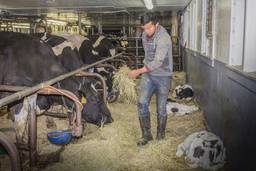A diet of bread and water used to be emblematic of poverty. Now a global food crisis is transforming that meager meal into a luxury for much of the world.
The prices of the world’s three main grains – corn, rice and wheat – more than doubled last year. The causes include poor harvests linked to climate change, diversion of cropland to biofuels, population increases, rising meat consumption, emerging diseases and soaring fuel prices.
In a globalized economy, issues of food scarcity and inflation should be a matter not only of humanitarian concern, but also of national security. A food crisis is exploding.
Last year, spiraling food prices sparked protests and riots in Cameroon, Egypt, Guinea, India, Mauritania, Mexico, Morocco, Pakistan, Senegal, Uzbekistan and Yemen.
Children in Yemen marched to draw attention to their hunger. Farmers in Thailand slept in fields to prevent rice crop theft. Hundreds of construction workers in the United Arab Emirates torched cars and ransacked buildings to demand higher wages to counter surging inflation.
The problem is not just price but actual shortage. World grain stores have not been this low since the end of World War II. Argentina and Vietnam have risked treaty violations to impose protectionist trade caps and taxes aimed at stabilizing supply and stanching inflation. The Philippine government asked fast food restaurants to serve less rice to ease shortages.
The poorest are the worst hit, especially as the lifeline U.N. World Food Program (WFP) frays. In late March, it warned that unless donor countries immediately kick in $500 million to offset price hikes, WFP will start rationing food aid that feeds 73 million people – from Darfur’s genocide refugees to Haiti’s children.
Wealthy countries also feel the pangs. Despite dim-wittedly sunny U.S. government statistics on inflation, consumers – who are already staggered by fuel prices – have seen the cost of food staples soar.
In my own agriculture-heavy Vermont, Chris Barkyoumb, head of Hillcrest Foods, reports “an extreme shortage of wheat. And there’s hardly a food item that’s not going up. A lot of people are scared out there.”
The most intractable factors are the evil twins of climate change and fossil fuel dependence. Global wheat production has fallen behind demand for seven of the past eight years, as historic droughts have hit major wheat-producing countries like Australia, Canada, Russia and Uzbekistan.
Part of the price rise in Hillcrest’s wheat is due to a 30 percent fuel surcharge it passes to customers. And because most of the world’s fertilizers are petroleum-based, farmers are damned by low yield if they scrimp, and by high costs if they don’t. From January 2007 to January 2008, global fertilizer prices surged by an unprecedented 200 percent, as farmers tried to maximize production of corn – now used for ethanol. Hardest hit are African farmers, many of whom need fertilizer to replenish nutrient-depleted soils.
Adding to the shortages and price spikes is an insane policy that pits the world’s 850 million chronically hungry against its 800 million motorists. Despite the nearly even numbers, it is not a fair fight. In an October 2007 address, Jean Ziegler, the U.N. special rapporteur on the right to food, called the biofuel boom “a crime against humanity.”
Another vast diversion of world grain is animal products. One pound of meat requires up to 40 pounds of grain input. Not only does the earth have more mouths to feed every second, but more of them are chewing meat as rising living standards in China and India make it affordable. China’s per capita meat consumption jumped from 44 pounds in 1980 to 110 pounds today – still half the U.S. average. According to the Sierra Club, “America could feed most of Africa with the grains we feed to livestock.”
Adding to global fear is a virulent wheat disease that began in Uganda in 1999. It recently reached Iran and is threatening crops in India and Pakistan. The fungus, known as Ug-99, “can spread rapidly and has the potential to cause global crop epidemics,” U.N. expert Dr. Jacques Diouf said this March. In the ’50s, a similar plague killed 40 percent of North America’s spring wheat.
According to the New Scientist magazine, “U.S. Department of Homeland Security met in March 2007 to discuss the possibility that someone could transport Ug-99 deliberately.”
While the Bush administration scares the nation with visions of bin Laden lurking under our beds, greed and willful blindness are precipitating a global catastrophe of hunger that endangers not only America’s security, but the world’s.









